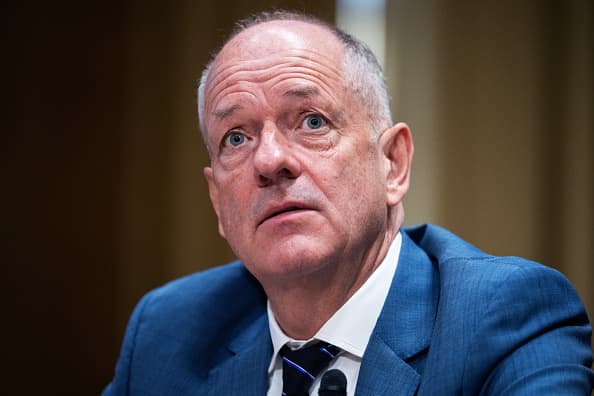
Inflation has picked up since President Donald Trump announced new import tariffs in April, with the latest consumer price index data showing outsized increases in tariff-sensitive categories, including coffee, toys and televisions.
Overall prices rose 2.9% in August from a year earlier, up from 2.7% in June and July, according to CPI data released Thursday. The CPI measures the cost of a broad basket of everyday goods and services, including groceries, rent and medical care.
That leaves inflation drifting farther from the Federal Reserve’s target of 2%. Core inflation, which excludes volatile food and energy prices, rose 0.4% in August, the biggest monthly gain since January, and is up 3.1% from a year earlier.
Taken together, this means more pressure on everyday household spending.
How tariffs feed into inflation
Although Trump’s sweeping tariffs were first announced in April, the effects have shown up unevenly since goods move through supply chains at different rates and imports make up a larger share for some products than others.
Even so, they still have a “significant impact on prices,” according to the Federal Reserve Bank of San Francisco.
Take bananas, for example. Prices climbed 4.9% from April through August — equivalent to an annualized pace of about 15% — a notable jump for a category that rarely sees much inflation. Virtually all U.S. supply comes from Central and South America and is now subject to a 10% tariff.
Bananas aren’t the only industry affected. The Fed’s Beige Book survey in August said all regions were seeing tariff-related price increases, spanning sectors from food and retail to manufacturing and health care, with many businesses reporting they’ve started to pass those costs on to consumers.
Overall, Americans now face an average tariff rate of 17.4% — the highest since 1935 — an increase estimated to cost households an extra $2,300 in 2025, according to the Yale Budget Lab. (These estimates include tariffs imposed under the International Emergency Economic Powers Act, which remain in place while the court challenge is pending).
To get a sense of where else inflation has been heading, here’s a look at five of the most-impacted products since April, compared with their historical norms for the same time period over the last 10 years.
Coffee
Coffee prices jumped 9.8% from April to August, including a 3.6% spike last month. Poor harvests earlier this year had already tightened supply, but prices rose dramatically faster after new import tariffs took effect.
Since the U.S. grows less than 1% of the coffee it consumes, the market is especially exposed to import duties. Global tariffs that started at 10% in April were later raised sharply on major suppliers like Vietnam and Indonesia.
Brazil — which supplies more than a third of the U.S.’s arabica beans — was hit with a 50% duty on Aug. 6. That late move could keep coffee prices climbing in the months ahead, industry groups say.
Jewelry and watches
Jewelry and watch prices surged 5.5% in August, far above their historical average monthly gain of 0.8%.
The U.S. relies heavily on imports for luxury jewelry and its components, and since April a 10% tariff has been broadly applied to this category.
But rates have gone higher still. On Aug. 7, the U.S. raised tariffs on all Swiss imports — including watches — to 39%, far above the baseline. Switzerland supplies more than 90% of the U.S.’s imported precious-metal wristwatches, per the Wall Street Journal.
The U.S. has also extended tariffs to India, a leading supplier of cut and synthetic diamonds, and to Japan, which exports premium mechanical watches to the U.S. Those additional levies could push jewelry and watch prices higher in the coming months.
Bananas
Normally a stable category in the CPI, bananas saw an unusually sharp 4.9% increase between April and August. With virtually all supply imported from Central and South America, the U.S. market is directly exposed to tariffs, including the 10% across-the-board duty imposed in April.
Bananas remain cheap compared with most fruits and vegetables, with a reputation for long-running price stability. Reflective of that stability, Trader Joe’s held its banana price at 19 cents each for more than two decades, only raising it to 23 cents in early 2024.
Televisions
Television prices edged up 2.5% in August and are up 3.1% since April.
While the increase might seem modest, television prices have been on a downward trajectory since the late 1990s. Manufacturing efficiencies and the rise of “smart” TVs that generate revenue from advertising and data collection have helped drive sticker prices lower.
Nearly all TVs sold in the U.S. are imported, mainly from Mexico, China and Vietnam. Imports from Mexico can face tariffs of up to 25%, depending on compliance with USMCA rules, while some shipments from China face rates as high as 30% and Vietnamese TVs generally face a 20% duty.
The summer run up in prices stands out as a break from the usual pattern for a product that typically gets cheaper over time.
Toys
Toy prices rose 2.5% between April and August, the steepest four-month gain since 2021.
Like TVs, toys are largely manufactured abroad, with roughly 70% of U.S. imports coming from China. Tariff classifications are not always clear, but many Chinese toy imports could be subject to tariffs around 30%, depending on classification, while some shipments from Vietnam may be taxed at higher rates.
The increase is notable because toy prices have been on a long downward trajectory.
Want to stand out, grow your network, and get more job opportunities? Sign up for Smarter by CNBC Make It’s new online course, How to Build a Standout Personal Brand: Online, In Person, and At Work. Learn how to showcase your skills, build a stellar reputation, and create a digital presence that AI can’t replicate.
Plus, sign up for CNBC Make It’s newsletter to get tips and tricks for success at work, with money and in life, and request to join our exclusive community on LinkedIn to connect with experts and peers.
